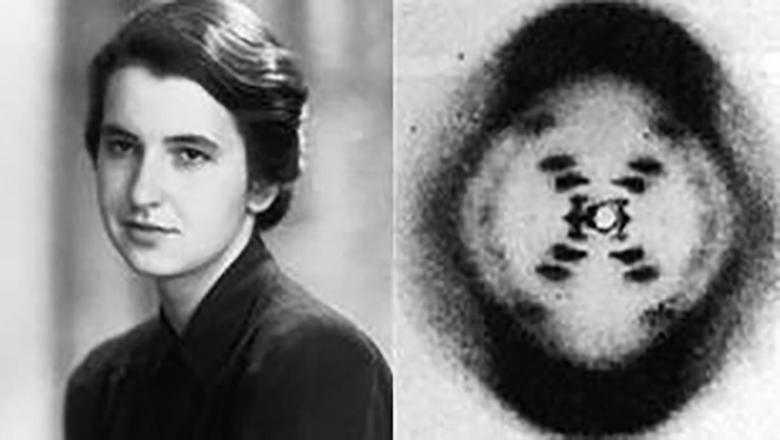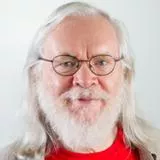25 April 2013
The discovery of the structure of DNA
Today marks the 60th anniversary of the famous edition of Nature that revealed the secrets of DNA and detailed the physical and chemical basis of how characteristics are passed down through the generations.

Two of the three historic papers about the structure of DNA published in Nature on 25 April 1953 were written by scientists from the Randall Institute at King’s College London. This Institute at King’s was the first to bring together physicists, chemists and biologists and to apply physical techniques to the solution of biological problems.
Work on DNA began at King’s by Maurice Wilkins and Ray Gosling. In the summer of 1950, using a moistened sample of DNA fibres and an X-ray diffraction camera they had modified by filling it with hydrogen to reduce background scattering, they obtained the clearest pictures so far of the crystalline pattern of DNA. In the same year their colleague Alec Stokes suggested that the patterns obtained by their images showed that the molecule was helical in structure.
'Photo 51’, taken by Rosalind Franklin and Ray Gosling at King’s in 1952, can claim to be one of the world’s most important photographs. It demonstrated the helical structure of DNA and, with their own deductions, enabled James Watson and Francis Crick of the University of Cambridge to build the first correct model of the DNA molecule.
Their Nature paper (A Structure for Deoxyribose Nucleic Acid) was published alongside Molecular Structure of Deoxypentose Nucleic Acids by M H F Wilkins, A R Stokes & H R Wilson and Molecular Configuration in Sodium Thymonucleate by R Franklin and R G Gosling. Professor Maurice Wilkins and his colleagues later verified the Cambridge hypothesis about the structure of the molecule, and Wilkins received the Nobel Prize with Crick and Watson in 1962 for his work on DNA over many years. Dr Franklin died from cancer at the age of 37 in 1958.
As part of the 60th anniversary celebrations the College held a special dinner on 18 April to honour the contribution of Ray Gosling, the last remaining member of the team at King’s. The Principal, Sir Rick Trainor, opened by outlining the DNA story and Professor Ellen Solomon, Head of the Cancer Genetics Research Group at King’s, spoke about the strands of scientific research that have resulted from the discovery.
Ray Gosling himself told of his first-hand involvement in discovering ‘the secret of life’, and of his constant fear of causing an explosion in the lead-lined, hydrogen-filled room in which he worked the crystallography camera. Guests included Sir Mark Walport, the new Chief Scientific Officer; Lady Brenda Maddox, Franklin’s biographer; and George Wilkins, the son of DNA scientist Maurice Wilkins as well as a number of research students from King's.
King’s important part in the original DNA story is reflected in the leading role which the College’s researchers have continued to play in research in this area in medicine, dentistry, the biological and physical sciences, psychiatry, and medical law and ethics. Recent examples include research led by Professor Paul Sharpe from King’s Dental Institute, which has advanced the development of a bioengineered tooth generated from a person’s own gum cells, and Professor Tim Spector’s work in the Department of Twin Research & Genetic Epidemiology on Epigenetics – an exciting new research area exploring how genes can be altered.
Professor Spector and his team have demonstrated the genetic basis of a wide range of common diseases. The legacy of ‘Photo 51’ and the work carried out at King’s also lives on through Codebreakers: Makers of modern genetics, launched last month. The £3.9m digitisation project from the Wellcome Library contains over a million pages of first-hand notes, letters, sketches, lectures, photographs and essays from the scientists responsible for uncovering the structure of DNA, including Wilkins and Franklin.
King's College London Archives has also created an online exhibition on King's role in the DNA story. As well as these activities, ‘Photo 51’ will be part of an exhibition 'Photo 51 - from DNA to the brain' from 25 June to 27 July in the Inigo Rooms, Somerset House East Wing, Strand Campus.



